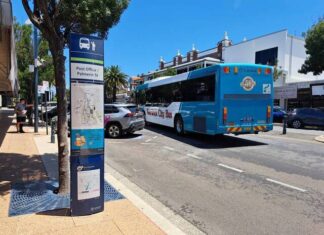A process has been instituted by the Queensland Government to allow us to put our case forward if we wish to de-amalgamate the local council.
Part of this process is that a petition of at least 20 per cent of the electors within the boundaries of the pre-amalgamation shires should be prepared and presented to the Local Government Minister within weeks. Petitions are now available in some businesses around the area.
According to Bob Johnson, former committee member of the anti-amalgamation group Save Our Shires Action Group, “amalgamations generally were unnecessary, undemocratic and were based on an untruth that approximately 45 per cent of Queensland’s councils were financially unsound and /or broke”.
“After the event, it was revealed that Queensland Treasury Corporation had in fact stated only 12 per cent were in serious trouble,” Mr Johnson said.
“Despite plebiscites made possible by the Federal Government, wherein the people (electors) throughout Queensland and particularly in Stanthorpe and Warwick showed overwhelming opposition to them, the amalgamations were pushed through,” he said.
“It is time to inform people that those amalgamations cost councils far more than the Queensland Government paid and the lion’s share was paid and is still being paid by your councils,” Mr Johnson claims.
“Amalgamation costs are ongoing and will cost you, the ratepayer, and others in the area for years to come.
“In the current process, the government is asking councils to pay de-amalgamation costs, a matter which must be challenged. So far as can be estimated, these costs should be insignificant compared to the costs of amalgamation, past and future.
“Some of the problems the amalgamation created have been told recently by some of the people affected in Southern Downs, for example
nSporting clubs in the Stanthorpe area and supporters, officials and coaches etcetera had strong council support from Stanthorpe Shire for care of playing facilities but no longer get that degree of support.
nLocal businesses have lost significant business because they no longer get much or any orders from the council. In the past they tendered along with others for council business and, if within “coo-ee” of the lowest tenders, they got some work or orders. Now, due to amalgamation cost pressures, the lowest bidders generally get the job and they are most likely to be large companies from the coast or elsewhere who have the advantage of huge economies of scale compared to our small businesses and who may be seen by council as likely to do the job within the budget.
nThe morale amongst employees is generally lower than before, due to post-amalgamation uncertainty.
“So, despite some recent comments in our local press, in Stanthorpe local businesses, sporting groups, council employees and a large percentage of others seeing the petition have expressed the view that they support de-amalgamation and have signed the petition.
“They look forward to the time when Stanthorpe Civic Centre, the council offices and other facilities will again be properly and fully utilised as they were designed to be. Others in Warwick area are expressing interest in the process.
“In the current Local Government/Boundaries Process, de-amalgamation costs are to borne by the de-amalgamating councils. So what! What are they? Are they of any consequence?
1. Some legal costs to formalise the separation agreements. Logically these should definitely be borne by the government who instituted the amalgamation process and who will have to initiate the unwinding processes. This has to be argued strongly. Nevertheless they should be kept to a minimum.
2. Costs of signage – some signs are still in place and others are still in storage, so costs will be insignificant.
3. Costs of logo, mayoral regalia, and furnishings etcetera – these will be in storage, so little or no cost.
4. Stationery – letterheads etcetera can be computer generated, so little or no cost.
5. Assets are already there and simply need to be allocated properly between the ‘new’ councils. No new assets need be purchased as any shortfall can be shared by mutual agreement. These agreements can be worked out by staff and councillors already employed, so no extra cost is involved.
6. Staff can be allocated amicably between the new councils on a pro rata basis or roles shared between councils so there should be no cost unless relocation of place of residence is necessary.
7. Computer systems and software are already in place and can be adjusted to either work as separate systems or shared systems initially. There must be staff on site who can work that out without outside involvement. Therefore little or no cost.
8. Budgets and Forward estimates have already been done for the financial year for the whole council area so, in essence, they are in place for the two parts, that is, the two council areas. Surely current council officers can separate the whole into the two at no extra cost.
“What else is there that really matters or that cannot be left to later if found later to be really necessary?” Mr Johnson asks.
For further information, you can contact anyone from the old Save Our Shires Action Group Committee. A public meeting will be held at the Anglican Hall, Corundum Street, Stanthorpe from 6.30pm on Thursday, July 26.
Petition to de-amalgamate?
Digital Edition
Subscribe
Get an all ACCESS PASS to the News and your Digital Edition with an online subscription
50+ Southern Downs bus stops slated for revamp
More than 50 bus stops in the Southern Downs are slated for a revamp in the coming months as part of a region-wide push...








